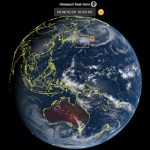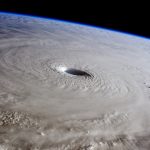 February 12, 2020 2:19 pm
Published by Climate Extremes
February 12, 2020 2:19 pm
Published by Climate Extremes
This study looks at data-sharing issues and outlines the history of the rationale and use of indices, the types of indices that are frequently used and the advantages and pitfalls in analysing them.
 November 26, 2019 9:57 am
Published by Climate Extremes
November 26, 2019 9:57 am
Published by Climate Extremes
In this paper, CLEX researchers considered the steady-state response of the atmosphere to an imposed large-scale flow. They found that under these steady-state conditions, humidity increases with the precipitation rate, while the lapse rate (rate of decrease of temperature with height) increases.
 November 25, 2019 1:15 pm
Published by Climate Extremes
November 25, 2019 1:15 pm
Published by Climate Extremes
To better understand the biases and ultimately improve the quality of our climate records, CLEX researches and their collaborators undertook in situ measurements using the NOAA Physical Sciences Division flux system during the Clouds, Aerosols, Precipitation, Radiation, and Atmospheric Composition over the Southern Ocean (CAPRICORN) experiment in 2016.
 November 25, 2019 12:15 pm
Published by Climate Extremes
November 25, 2019 12:15 pm
Published by Climate Extremes
This paper investigates the annual cycle in cloud and rainfall measurements over the western equatorial Indian Ocean. While there is a single period of strong rainfall over the region during December-January each year, there are two periods of increased high-top clouds associated with convection.
 October 25, 2019 11:31 am
Published by Climate Extremes
October 25, 2019 11:31 am
Published by Climate Extremes
While the data from Himiwari-8 provides very useful data on clouds at relatively high resolution, researchers need to know if it produced any biases, particularly around cloud-top height and cloud-top temperature, whose roles are critical in shaping Earth’s climate. CLEX researchers and Australian colleagues compared the Himawari-8 data for both of these measures with existing datasets.
 October 15, 2019 4:18 pm
Published by Climate Extremes
October 15, 2019 4:18 pm
Published by Climate Extremes
This research uses commercial aircraft data and high-resolution simulations to study a case in 2005 over the United States where severe turbulence was encountered about 50km away from a large mesoscale convective system. Of relevance, current aviation turbulence avoidance guidelines recommend avoiding storms by 32 km (20 miles).
 August 22, 2019 12:56 pm
Published by Climate Extremes
August 22, 2019 12:56 pm
Published by Climate Extremes
The Philippines is one of the most exposed countries in the world to tropical cyclones. In order to provide information to help the country build resilience and plan for a future under a warmer climate, researchers built on previous research to investigate implications of future climate change on tropical cyclone activity in the Philippines.
 August 15, 2019 11:58 am
Published by Climate Extremes
August 15, 2019 11:58 am
Published by Climate Extremes
This study uses 13 years of weather radar data in Darwin, Australia, to investigate how the structure of convective clouds relates to the environment they are embedded in.
 August 2, 2019 11:34 am
Published by Climate Extremes
August 2, 2019 11:34 am
Published by Climate Extremes
This release is to advise the community that an ACCESS Oversight Committee has been formed initially comprising Christian Jakob, Rachel Law, Helen Cleugh, Andy Pitman, Tony Hirst, Peter May, David Karoly and Ben Evans. Terms of reference have been agreed to by the group and can be found at the end of this document.
 July 9, 2019 9:00 am
Published by Climate Extremes
July 9, 2019 9:00 am
Published by Climate Extremes
Climate scientists testing a new mathematical and statistical method that converts projections of future climate outcomes in a warming world into reliable probabilities have found there is a significant chance the Arctic could be ice-free even if world leaders meet the Paris targets of 1.5°C and 2°C.










